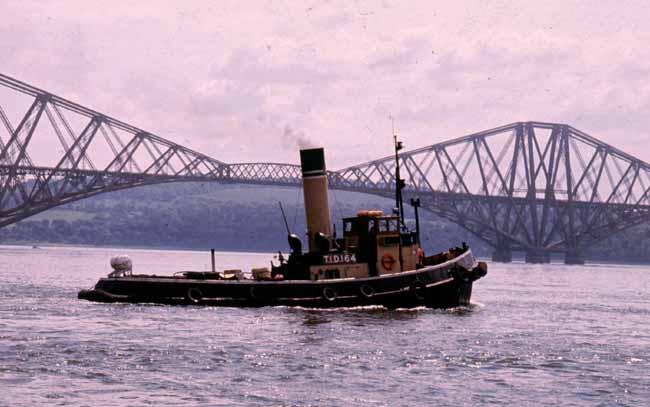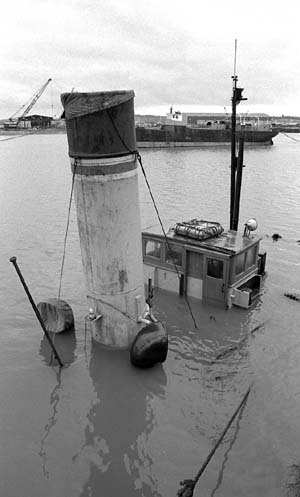Steam
Tug TID164
Preserving
and running a wartime vessel in the 21st Century
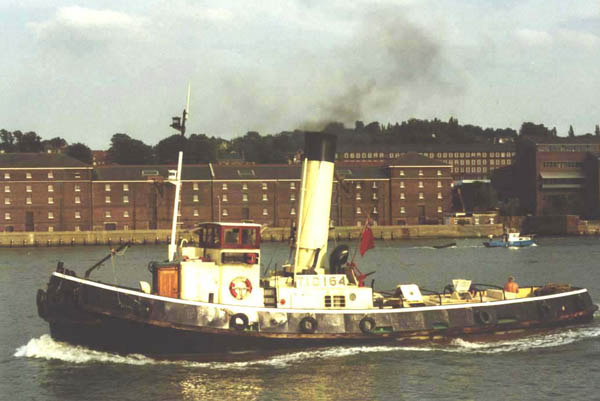
|
|
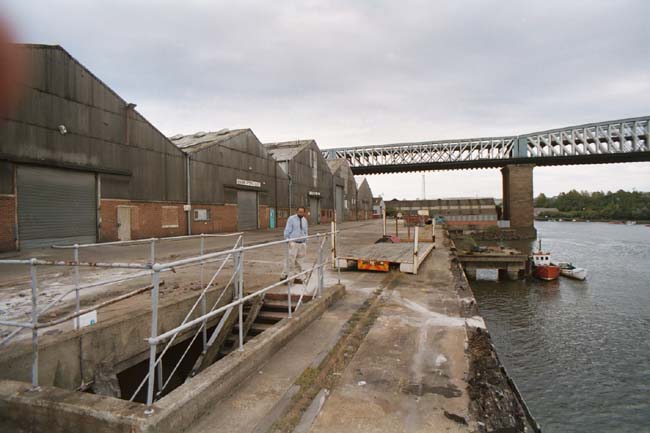
Site
of the Pickersgill yard, Sunderland |
INTRODUCTION
Like
most TIDs, TID 164 was intended for wartime service but missed
active duty because she was still being built as the war ended.
As one of the last TIDs she was built by William Pickersgill
& Sons Ltd., in Southwick, Sunderland, for potential use
in the far east.
The only concession for the tropical conditions was a steam
generator to run a boiler room ventilator fan, as well as
electric lights.
|
|
|
Early
Service History
1945:
For about two years she was in Naval Service at Port Edgar,
attached to the shore establishment HMS Lochinvar on the Firth
of Forth, Scotland.
1947: The Port of London Authority chartered
TID 164 to join other TIDs in the London Docks including Brent
(TID 159), another Pickersgill tug.
1948: TID 164 went back to the Firth of Forth
and was based at the Royal Naval Dockyard, Rosyth.
1962: She was in reserve, and was then put
under the command of the Captain of the Dockyard at Rosyth in
May 1967, and remained active until she was put up for sale
in 1974. |
|
|
1972
- 73
In
1973, when Martin Stevens from the Medway Maritime Museum was looking
to replace Biddick (TID 54), the last coal fired TID, he started negotiations
with the Ministry of Defence in Bath, Somerset. They had two TIDs
left in service - TID 172 in Chatham and TID 164 in Rosyth, Scotland.
The
Medway Maritime Museum was based in Chatham but it was not for them
to question the decision of the M.O.D. to offer them TID 164. When
Martin Stevens persuaded the Admiralty that they should sell their
last TID tug for a "less than commercial price" for preservation,
a deal was struck.
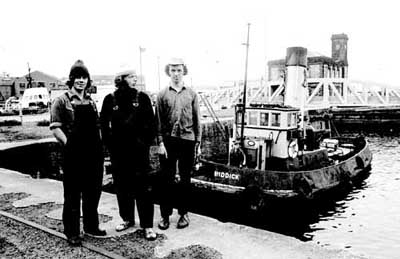
Collecting
Biddick (TID 54) from Sunderland
(l to r) Michael List Brain, David Trussell, Martin Stevens
When the new owner and friends went north to collect the tug, they
had calculated that the
9 tons of oil which the M.O.D. supplied would not be enough. Before
they sailed another ton of oil was lashed on deck in barrels, Two
and a half days later TID 164 joined the Empire Class steam tug Cervia
in Chatham and in accordance with Museum policy was used commercially.
Compass had been swung and lifesaving equipment had been loaned.
|
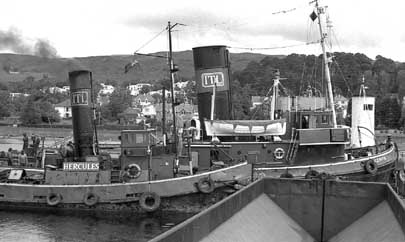
The
ITL International Towing Ltd Fleet
|
ITL
Iternational Towing Ltd
In 1975 the name TID 164 was changed to Hercules. This was done
to disguise the fact that TID tugs were only 220 indicated horsepower.
The Museum also used the name ITL International Towing Ltd.
to increase credibility with customers. Using the tugs commercially
certainly worked for Cervia but not for TID 164.
Cervia was used for coastal towing and had a regular crew to
maintain her. When a vessel had to be towed up a creek in shallower
water the crew would transfer to TID, do the tow, and then abandon
her. Only when the tug worked in her own right did proper maintenance
happen.
Tows
included gravel barges from Tower Bridge to Rye in Sussex, a
tow of another two barges through the Caledonian Canal - one
with Cervia, one with TID, and the collection of the Museum's
other Empire Class steam tug Goliath from the Clyde.
|
"Dad's
Navy"
A
memorable tow was that of the steam powered Thames sewage ship
Edward Cruise which Cervia delivered to the River Medway. TID
164 took over, and struggled into the shallower waters of Otterham
Creek to Bloors Wharf. This tow produced ITL's most dramatic
accident which closed Europe's largest cement factory for a
week!
To cut a long story short, the BBC were on board Cervia filming
a feature for the Nationwide programme called "Dad's Navy".
The director wanted to match the speed of the engine to Scott
Joplin's 'The Entertainer'! Without a thought for the tow which
was some 600 feet astern, the skipper duly telegraphed the engine
room to slow down. The tow lost speed on a corner of the river
and proceeded to demolish the elevators which unloaded ships
and barges.
Not content with this, the Edward Cruise swung from one side
of the Thames to the other, hitting barges and freeing them
from their mooring bouys as she went. The VIPs who were on the
Edward Cruise were not amused.
|
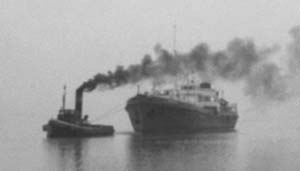
TID
164 on the River Medway
|
|
SCOTLAND
In anticipation of a contract, TID 164 waited on the west coast of
Scotland near Cairnryan where the aircraft carrier Centaur was being
broken up, and later in the Crinan Canal.
The contract did not materialise and TID suffered more neglect.
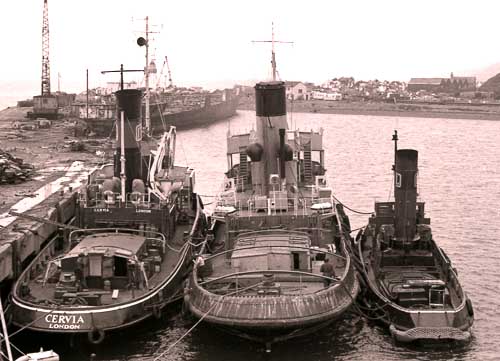
Awaiting
work on the West Coast of Scotland
|
|
|
1978
The prohibitive price of oil stopped commercial towing and TID
164 reverted to her original name. When the Small Ships Register
was introduced the tug was registered as a yacht thus avoiding
expensive Board of Trade regulations.
When TID 164 was moored at Chatham on a tidal berth with a concrete
base she sank at her moorings. Each of the eight original sections
of the tug was built with a drain plug which protruded from
the hull. On every tide the plug sat on concrete and eventually
the thread wore and the plug dropped out.
|
Before
the Royal Navy left Chatham in 1984 they fabricated the levers which
attach counter-balance weights to the funnel.
After modifying the funnel a test run under the bridges of the Thames
gave the Houses of Parliament it's first dose of thick black smoke
in many years!
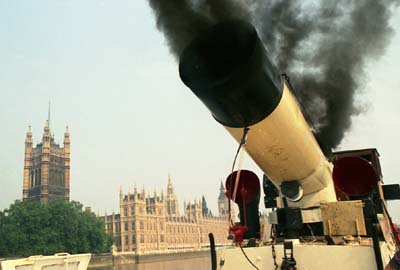

|
|
|
| |


